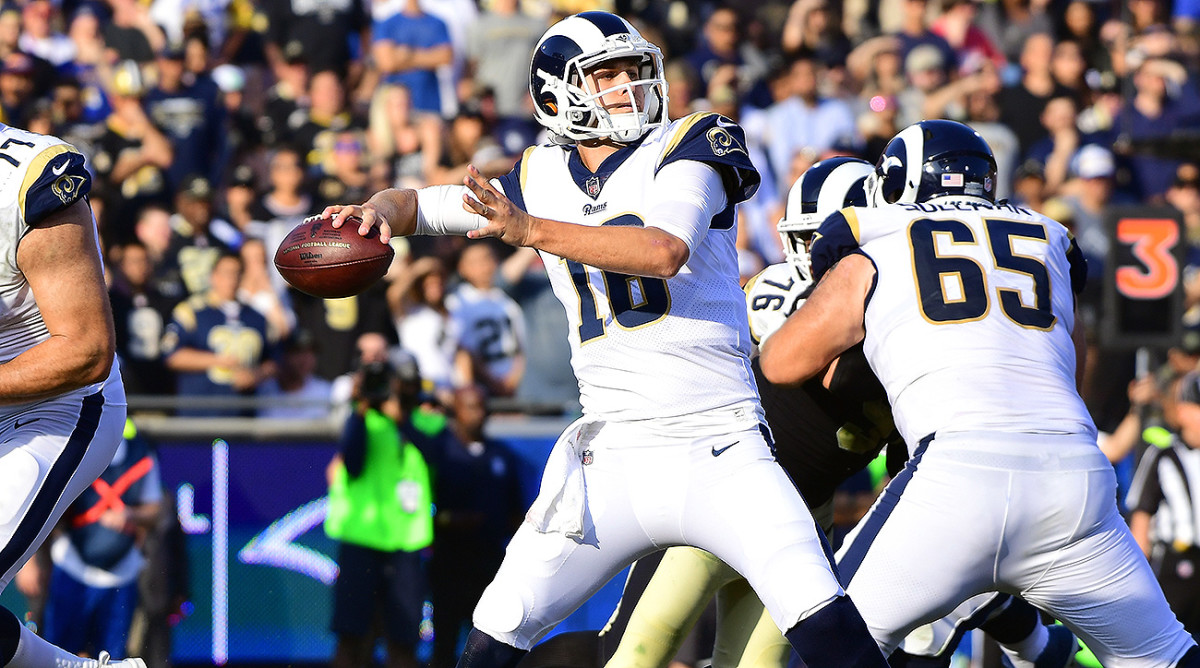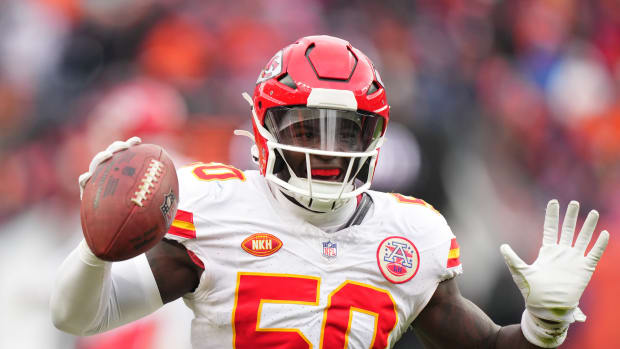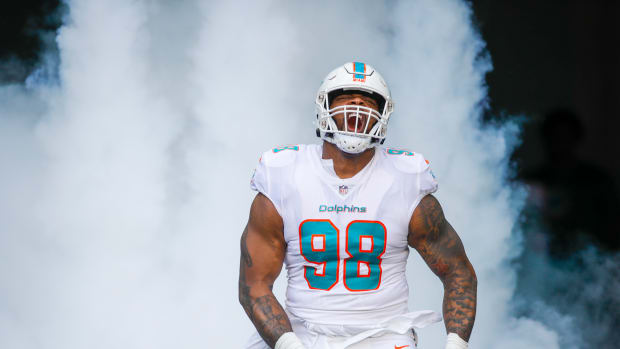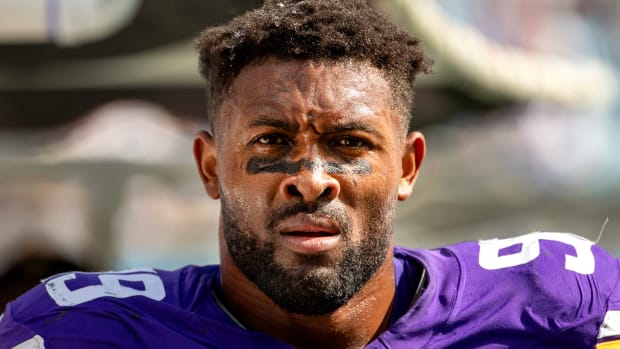Rams and Saints Exemplify the Difference a Year Can Make
LOS ANGELES — One year ago, in Week 12, the 4–6 Saints beat the 4–6 Rams in New Orleans and the NFL yawned. Sunday, those two teams provided the only Week 12 matchup that featured two teams with at least seven wins.
But they weren’t the same two teams at all. What difference can twelve months make? Sunday in Los Angeles, you could see the gap between the 2016 versions of the Rams and Saints and the teams that currently lead their respective divisions. You could see it on almost every play, starting with the opening kickoff. Pharoh Cooper, who’d been merely a part-time kick returner in 2016, continued his run toward a potential Pro Bowl trip with a 40-yard return. Seven plays later, recently acquired receiver Sammy Watkins caught a five-yard slant from quarterback Jared Goff to make it 7–0 Rams.
Does anyone recall the Goff of a year ago? In New Orleans last November, Goff was a shaky rookie making his second career start. Thanks in large part to new head coach Sean McVay, Goff now leads the NFC’s best offense and stands sixth in the league in passer rating. Goff passed for 214 yards in last year’s 49–21 loss in New Orleans. He exceeded that total by halftime on Sunday—and ended the game with 354 passing yards and a touchdown—capitalizing like a veteran on the injuries that kept the Saints’ two starting cornerbacks, Marshon Lattimore and Ken Crawley, out of the lineup.
Watkins? This time last year, he was a banged-up Buffalo Bill making just his third start of the year. Ultimately the Bills lost four of their last five and finished 7–9 in 2016. Now Watkins is healthy, dangerous and—barring a team meltdown—headed for his first playoff game.
“The change with this team starts from the top down,” linebacker Robert Quinn said after the game, describing the shift in a franchise that has won eight games for the first time since 2006. “New head coach, new D.C., new O.C. … Half the locker room from last year is pretty much gone. From day one, McVay said he was going to hold us to an extremely high standard. Guys have grasped that and we’re starting to see what we have ahead of us.” Finally free of his pads, Quinn sat at his locker, smiled and shrugged, unable to elucidate further.
“I’ve been around here for a little while. I’ve never been in this position. It’s special.”
The Saints’ improvement is just as visible. On their second drive, trailing 10–0, rookie Alvin Kamara took off on a 74-yard touchdown run that exceeded the rushing yards he amassed against Vanderbilt (69 yards) in a losing effort one year and one day earlier. Kamara, who played at three colleges before being chosen by the Saints with the No. 67 pick out of Tennessee, then took a seat and watched the No. 69 pick, Rams receiver Cooper Kupp, catch a 55-yard bomb from Goff—a completion that set up the TD that put L.A. up 17–7. That score went to another rookie, Josh Reynolds, a fourth-rounder from Texas A&M who one year ago was watching the clock tick down on the Aggies’ 54–39 loss to LSU.
But it wasn’t just about youth. The oldest left tackle in the NFL, Andrew Whitworth, was plying his trade in relative anonymity as a Bengal last fall before signing a three-year deal with the Rams this past March. On Sunday the Louisiana native, part of the only NFL offensive line to start the same five players in all of its games, helped neutralize the Saints athletic, playmaking defensive line, and enabled Todd Gurley to rush for 74 yards, including 28 in the clock-killing fourth quarter.
It wasn’t just about offense, either.
Early in the fourth, with the Saints facing third-and-goal from the three, Rams cornerback Kayvon Webster, who’d made a total of 17 tackles over the preceding two seasons with the Broncos, made the game’s most pivotal play. Saints receiver Michael Thomas had caught a pass from Drew Brees in the flat and turned upfield to find only Webster between him and the goal line, with plenty of room to make the cornerback miss and cut the Rams’ lead to six. Webster executed a clinical shoulder tackle in space—McVay later called it “a four-point play”—that forced New Orleans to settle for a field goal.
The Rams brought Webster into the fold in March 2017 on the advice of his defensive coordinator in Denver, Wade Phillips, who had just been hired to fill the same role with the Rams.
In the locker room, starting guards Jamon Brown and Rodger Saffold sat on either side of center John Sullivan. Brown and Saffold had played every snap of that 28-point loss in New Orleans on Thanksgiving weekend 2016. “This is a whole new team, new culture, new everything,” said Brown, the Rams’ third-round pick in ’15.
“New players, new coaches,” added Saffold, a second-round pick in ’10. “This offense attacks. We used to wait for things to go our way. This team makes them go our way.”
Sullivan, a 10-year-vet acquired from Washington (where McVay was his offensive coordinator), points toward Goff, the young quarterback. “I met Jared in April. I’ve only known him seven months, but he has grown immeasurably in that time. And that starts with Sean and the offensive staff.”
Sweaty beard flecked by gray, Sullivan knocked hard on his wooden locker—BOOM, BOOM, BOOM—when someone mentioned that the Rams o-line has started the same five players in all eleven games.
It’s the sound of a team stomping confidently toward a destiny that seemed unthinkable a year ago, but on Sunday looked preordained.





































